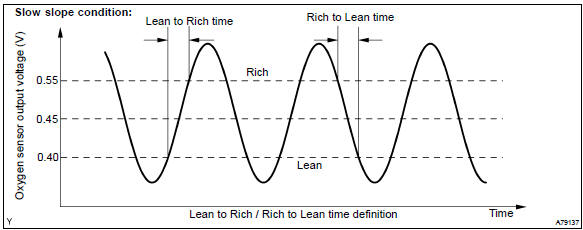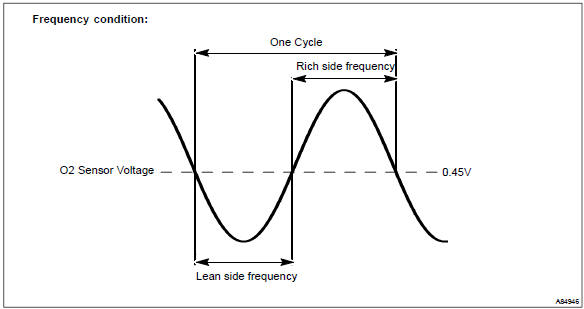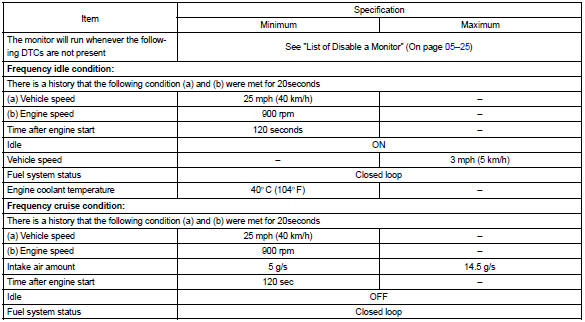Toyota Corolla (E120) 2002–2008 Repair Manual / Diagnostics / Sfi system / Oxygen sensor circuit slow
response / Circuit description
Toyota Corolla (E120): Circuit description
Refer to dtc p0130
|
Dtc no. |
Dtc detection condition |
Trouble area |
| P0133 | After engine has been warmed up, if response time that heated
oxygen sensor’s output voltage reaches from rich to lean. Or from lean to rich, is 0.6 Second or more during idling. (2 Trip detection logic) |
|
| If response time of heated oxygen sensor’s output voltage in one rich–lean cycle is 6 seconds or more during idling. (2 Trip detection logic) |
Hint
: sensor 1 refers to the sensor closest to the engine assembly.
Monitor description

The engine control module (ecm) uses the heated oxygen sensor information to regulate the air–fuel ratio close to a stoichiometric ratio. This maximizes the catalytic converter’s ability to purify the exhaust gases.
The sensor detects oxygen levels in the exhaust gas and sends this signal to the ecm.
The inner surface of the sensor element is exposed to the outside air. The outer surface of the sensor element is exposed to the exhaust gas. The sensor element is made of the platinum coated zirconia and includes an integrated heating element. The heated oxygen sensor has the characteristic whereby its output voltage change suddenly in the vicinity of the stoichiometric air–fuel ratio. The heated oxygen sensor generates waveform of a voltage between 0 v and 1 v in response to the oxygen concentration in exhaust gas.
When the output voltage of the heated oxygen sensor is 0.55 V or more, the ecm judges that the air–fuel ratio is rich. When it is 0.40 V or less, the ecm judges that the air–fuel ratio is lean.
The ecm monitors the response feature of the heated oxygen sensor. If the response time of the sensor output status change from rich to lean or vice versa becomes longer, the ecm interprets this as a malfunction in the heated oxygen sensor and sets a dtc.

Monitor strategy

Typical enabling condition


Typical malfunction thresholds

Component operating range

Wiring diagram
Refer to dtc p0130
Other materials:
Selecting wheel set (vehicles
with a tire pressure
warning system)
Your vehicle is equipped with a
tire pressure warning system
with a function to register two
sets of ID codes. This allows for
registration of a second wheel
set, for example a winter set.
The wheel set can be changed
only if a second wheel set has
been registered to the system. If
a second wheel s ...
Seat belts
Make sure that all occupants
are wearing their seat
belts before driving the
vehicle.
WARNING
Observe the following precautions
to reduce the risk of injury in the
event of sudden braking, sudden
swerving or an accident.
Failure to do so may cause death
or serious injury.
■Wearing a seat belt
E ...
Power point socket assy
Replacement
Hint: components:
1. Remove floor shift shift lever knob sub–assy (m/t transaxle)
2. Remove console panel upper
3. Remove power point socket assy
Turn the socket in the circumference direction as shown
the illustration, disengage the claw between the socket
and the pow ...


